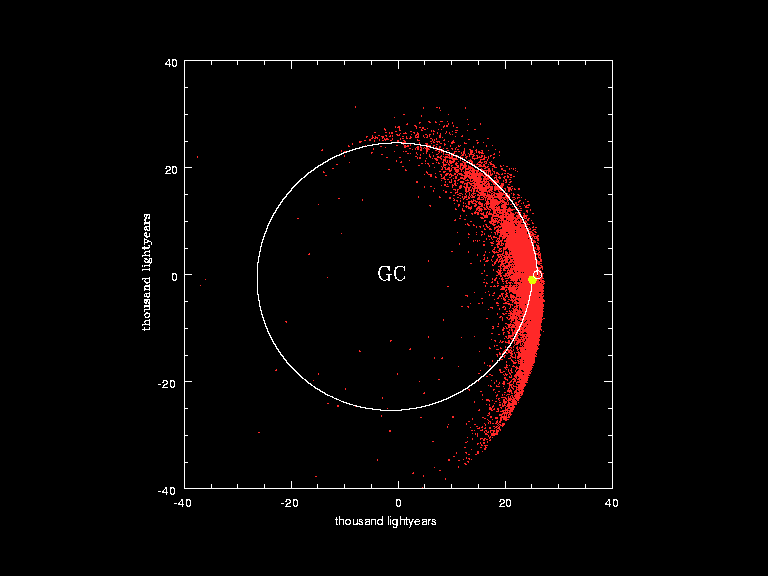Some stellar formation theories suggest that stars are formed by shock waves from trigger events such as supernovae.
This excerpt from Star Formation basically gives the background to my question:
Many astronomers regard the passage of a shock wave through interstellar matter as the triggering mechanism needed to initiate star formation in a galaxy. Calculations show that when a shock wave encounters an interstellar cloud, it races around the thinner exterior of the cloud more rapidly than it can penetrate its thicker interior. Thus, shock waves do not blast a cloud from only one direction. They effectively squeeze it from many directions.
Two questions:
If the Sun (and Solar System) was formed in this way, rather than a collapse of a cloud of dust and gas, (by itself, through gravity alone), do we have any idea of what event caused it, for example, do we know where a possible ex-supernovae is located, or has it long since vanished by now?
Stars are often formed in groups. I wonder do we have an age for the nearest stars (using the H-R diagram) or any evidence that they may have been part of the same gas and dust cloud that formed our Sun?
I do appreciate that:
Astronomical observations are difficult in many circumstances, e.g. obscuration by dust or gas often prevents an accurate picture of objects located many light years from Earth.
The Sun was formed 4,500 million years ago, this fact may make finding evidence of a possible trigger event extremely difficult to discover.
Answer
You're right that the Sun being 4.5 billion years old makes observations difficult. The Sun goes around the Galaxy about once every 225 million years, so since the Sun formed it has gone around the Galaxy perhaps 20 times. The trouble is that the Galaxy is not like the Solar System: stars don't go around on nice nearly circular orbits, everything is a bit jumbled. To give you an idea, here's an estimate of where the stars that are currently in the Solar neighbourhood have been during the last orbit of the Sun around the Galaxy:

As you can see, they span over 80,000 light years (that's basically the full width of the Milky Way) just 1 orbit ago, so a supernova remnant that was near the Sun 20 orbits ago could be virtually anywhere. We can't measure the age of the Sun or supernova remnants accurately enough to help either (as in being able to say "aha! a remnant with exactly the age of the Sun!").
It's similarly difficult to find stars that may have formed near the Sun. About the best we can do is to look for stars with similar age and chemical composition to the Sun, but at 4.5 billion years old, the accuracy of stellar ages isn't terribly good. Asking more broadly what star formation conditions were like in the Milky Way when the Sun formed is also a difficult question and a topic of current research, see for instance this reasonably current review.
A potentially more fruitful approach is to look for Sun-like stars that are forming now and see what conditions look like for their formation - potential triggering mechanisms, how many stars formed in a group, etc. But this only helps inform what the formation of the Sun would have looked like - it's likely the Milky Way was a significantly different beast 4.5 billion years ago in terms of gas supply, morphology, ISM conditions, etc.
No comments:
Post a Comment